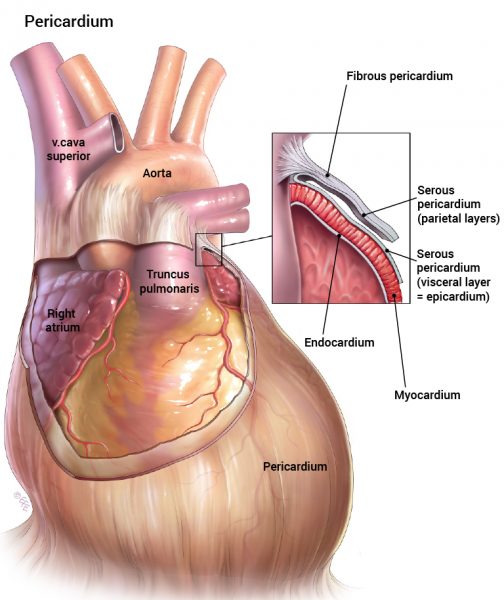The pericardium is a double walled sac that encloses the heart and consists of two membranes: the outer fibrous pericardium and the inner serous pericardium which covers the heart muscle.
The fibrous pericardium is a powerful and dense connective tissue membrane. It protects the heart against external forces, attaches the heart to its surroundings and prevents overfilling of the heart.
The serous pericardium is a tight bag that encloses the heart. It consists of two layers: the visceral layer that is attached directly to the outer heart muscle and the parietal layer that is attached to the fibrous pericardium . These two layers form a cavity containing pericardial fluid. This fluid serves as a lubricant between the parietal and visceral membrane. When the heart is contracting, it is contracting smoothly, and this is because of the low friction between the layers.
Sometimes after heart surgery, trauma, general surgery or infection (pericarditis) too much pericardial fluid can build up. This may need to be drained in order not to impair the heart’s movement.




